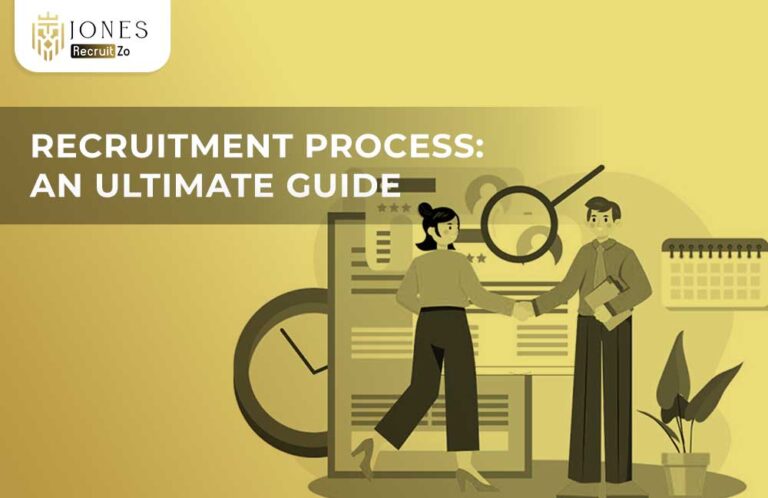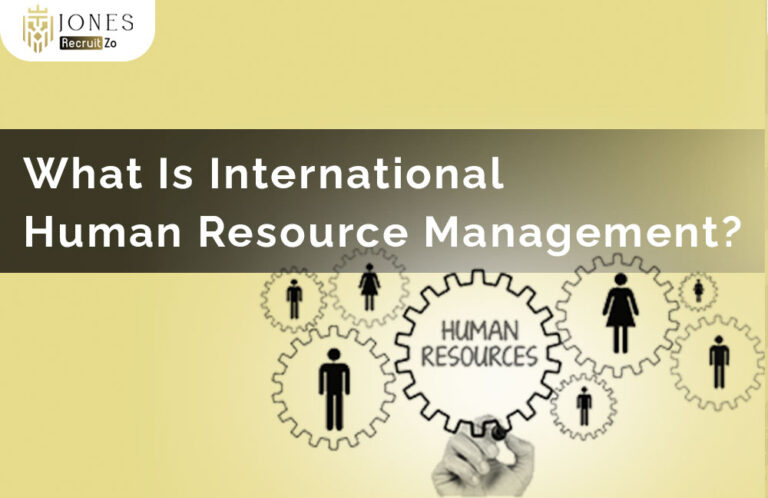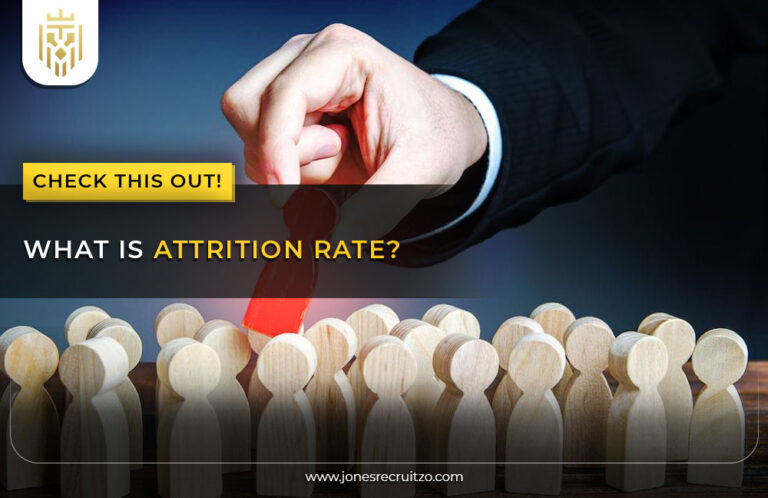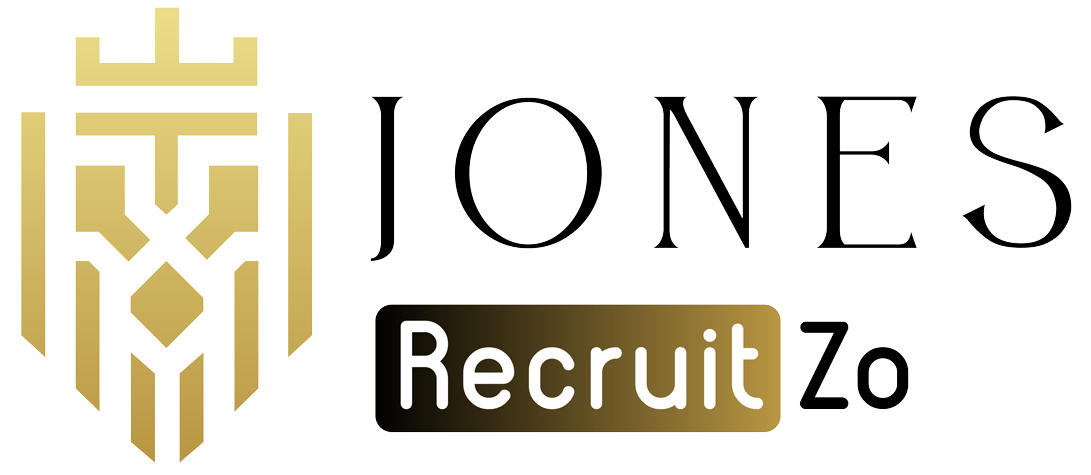Key Insights
What is Cost Per Hire (CPH)?
Cost Per Hire is a metric used to calculate the total cost involved in hiring a new employee. It includes both internal and external recruitment expenses.
How to Calculate Cost Per Hire (CPH)
Divide the sum of internal and external recruitment costs by the number of hires within a period. This formula provides an average cost for acquiring one employee.
Importance of Cost Per Hire
Cost Per Hire helps measure recruitment efficiency, optimise budgets, and support strategic hiring decisions.
Factors that affect Cost Per Hire
The main factors include job role complexity, industry, hiring volume, and the sourcing channels used.
What is Cost Per Hire in Recruitment?
In recruitment, Cost per Hire (CPH) refers to a metric that measures all expenses incurred by a company in recruiting an employee. It includes advertising costs, recruitment fees, internal recruiter salaries, onboarding, and hiring tools. It gives the recruiter and HR manager a perspective of the monetary impact their hiring process makes, to foster better planning and budgeting.
Cost Per Hire Formula
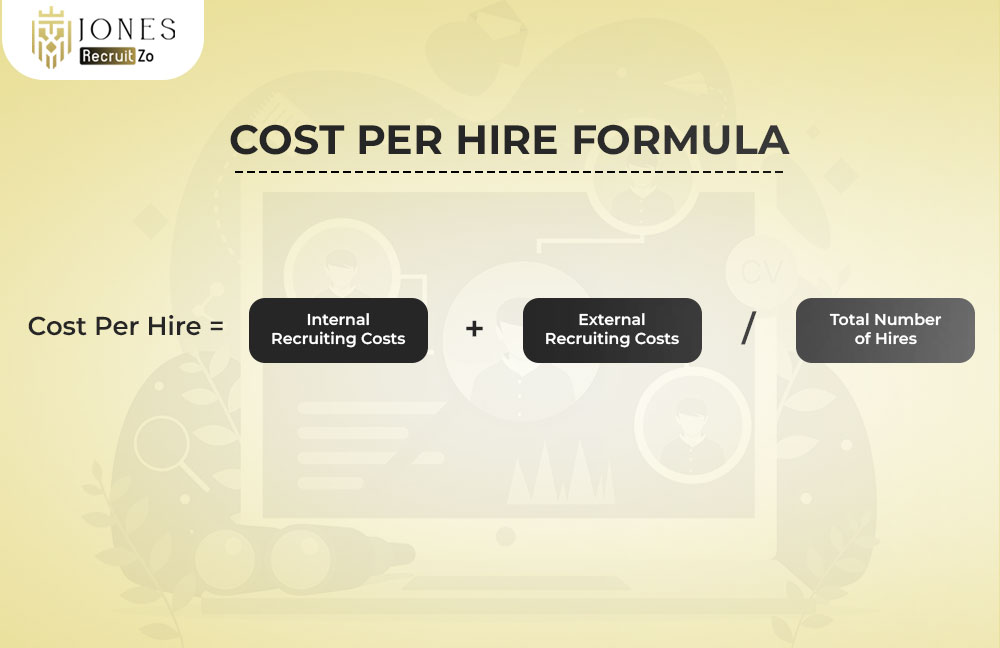
The proper CPH equation is formulated as:
Cost Per Hire = [(Internal Recruiting Costs) + (External Recruiting Costs)] / (Total Number of Hires)
Internal costs may include recruiter salaries, infrastructure, time spent interviewing by employees, training, etc.
External costs are those which may be incurred for job board listings, background verification, agency commission, recruitment marketing, and technology subscriptions.
By using this formula, a bird’s-eye view of the cost of hiring on a successful basis can be obtained and hence allows the organisation to analyse and better optimise recruitment costs.
Why is Cost Per Hire Important?
Understanding cost per hire is essential for managing recruitment budgets effectively. It offers insights into the efficiency of your hiring process and helps in making better financial and strategic decisions.
Enhances budget accuracy
Understanding one’s average hiring cost would be crucial in budgeting resource allocation for future recruitment cycles. This prevents HR from unscrupulous overspending and channels funds where the best returns can be generated.
Identifying Inefficiencies
An increase in CPH can be attributed to any problems such as poor job advertisement, ineffective sourcing channels, or a protracted hiring process. Discovering these loopholes early allows HR to adjust and fine-tune the hiring flow.
Improving ROI on Hiring
When companies pay attention to their recruitment costs, they can direct their efforts toward recruitment channels and practices that provide the highest return. This gives better hires, spending fewer dollars for greater value generation through recruitment.
Strategic Workforce Planning
Trustworthy CPH data feeds into long-term workforce strategies by plotting the costs of scaling the operations. This ensures that subsequent hiring plans remain within the bounds of reality and are aligned with targets for company growth.
Data-Driven Decision Making
CPH is not just a budgeting metric; it’s a decision-making tool. It informs everything from which job boards to use to whether to outsource hiring and how to allocate internal resources more efficiently.
What are the factors that affect cost per hire?
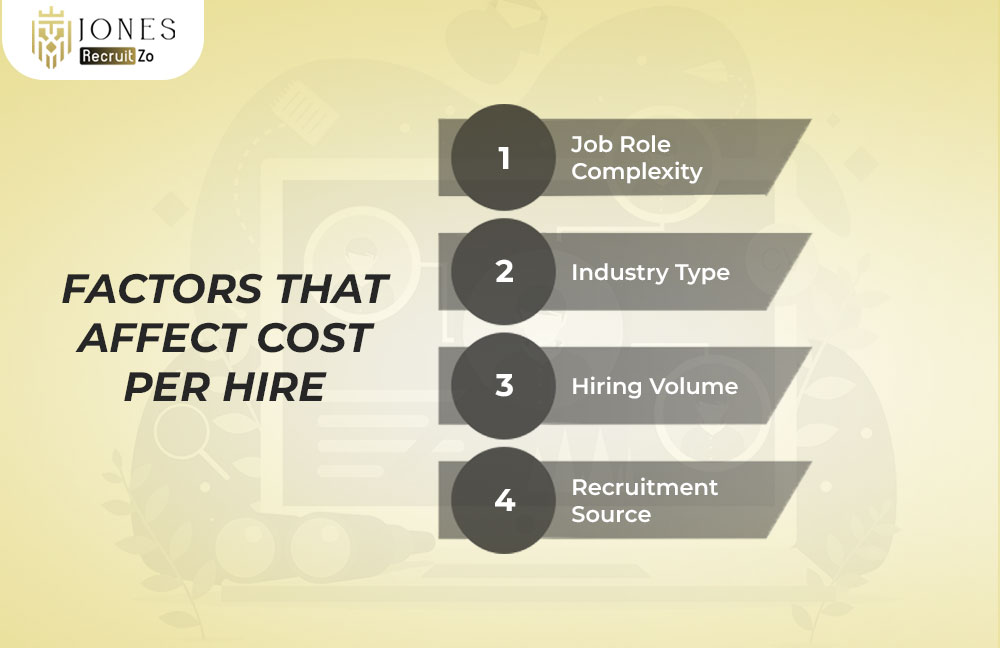
Several factors influence the overall cost per hire, and these can vary across industries, job roles, and hiring practices. Understanding them helps in setting realistic recruitment budgets and goals.
Job Role Complexity
Hiring for specialised roles such as data science, legal advising, or senior leadership often takes time in the unique recruiting efforts. The more complex a role is, the higher the CPH, because of the hazards of sourcing for months longer, alongside increased salary expectations.
Industry Type
The industry sort can naturally affect the average CPH above or below certain thresholds because of the lack of talent or regulatory requirements. Sometimes, for instance, healthcare, aviation, and the IT industry require certified/licensed professionals; that raises the cost of hiring.
Hiring Volume
When hiring in bulk, a company can spread its fixed costs – for instance, job posting charges, recruitment technology, and trainer fees – across many hires. Low-volume hires, however, tend to be generally more costly per hire due to isolated recruitment efforts.
Recruitment Source
Recruitment sources majorly influence the costs. Other than referrals and organic job applications, recruitment through external agencies and premium paid job boards can raise the overall CPH exponentially.
How to Reduce Cost Per Hire?
Reducing cost per hire doesn’t mean compromising on quality. It involves adopting smarter, more efficient methods that bring in the right talent while managing expenses effectively.
Use Employee Referrals
Referral programmes are cost-effective and often lead to better retention. Employees can recommend candidates who are likely to fit into the company culture and require less onboarding time.
Invest in Technology
Extensions in the automation of certain recruitment processes with ATS and AI tools not only save a lot of time but also minimise manual-entry errors. As these tools evolve, the hiring gets cheaper because they become faster and more accurate.
Build a Talent Pipeline
A pre-qualified candidate database makes it a snap to hire once a role opens up and greatly reduces having to advertise repeatedly or conduct an in-depth search.
Streamline the Interview Process
Time-consuming multi-stage interview processes are costly from an internal point of view and also prone to candidate drop-offs. In contrast, an efficient interview process enhances internal efficiency as well as the candidate experience.
Focus on Employer Branding
Strong employer branding provides organic attraction for talents and thus reduces the costs of advertising. Something like positive reviews, a comprehensive and attractive careers page, and a clear mission for the company can significantly lower acquisition costs.
FAQs
1) What is the cost per hire in recruitment?
Cost Per Hire is a recruitment metric that tells how much a company pays to hire an employee into a certain position – whether through any internal procedures, such as the salary of interviewers, or external ones, such as fees for external agencies.
2) How to Calculate Cost Per Hire?
The formula to use is (Internal Costs + External Costs) ÷ Total Number of Hires. So, here you are obtaining the average cost of hiring one employee.
3) Why is Cost Per Hire Important?
It equips companies to prepare their recruitment budgets, identify any inefficiencies, and set the basis for making better hiring decisions through monetary facts.
4) How to Reduce Cost Per Hire?
Companies can reduce CPH by fostering referrals, using recruitment technology, maintaining a talent pool, simplifying interviews, and improving employer branding.


